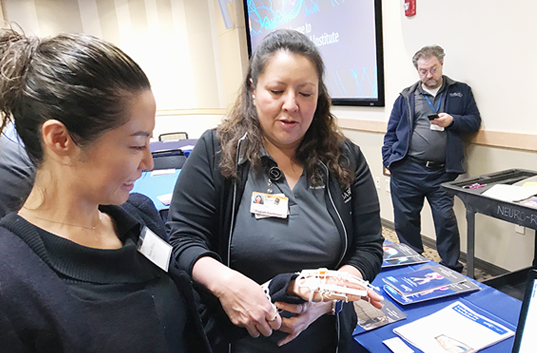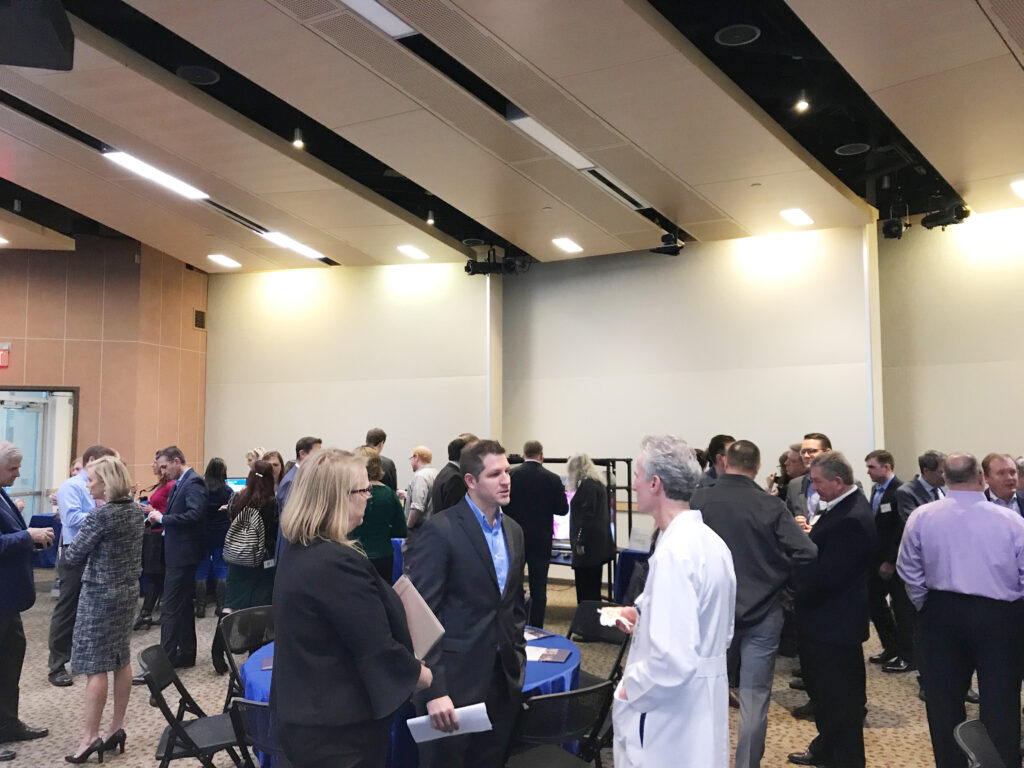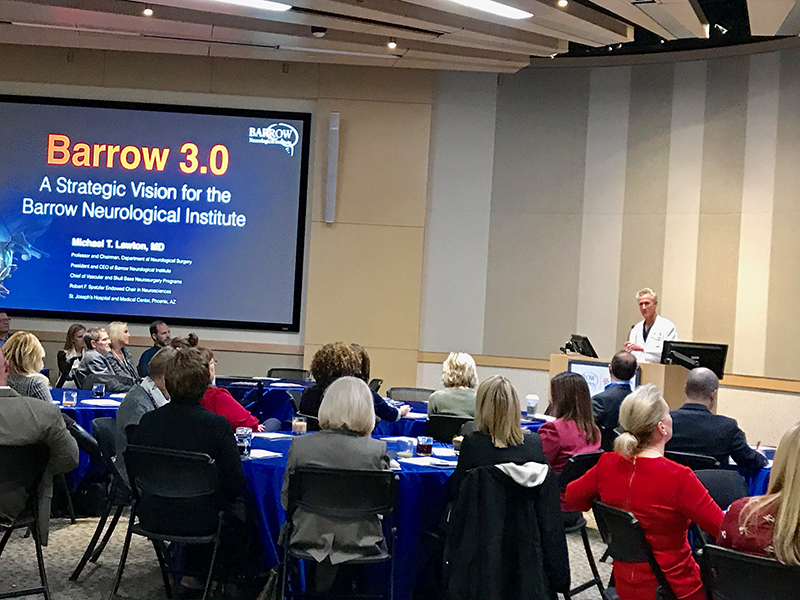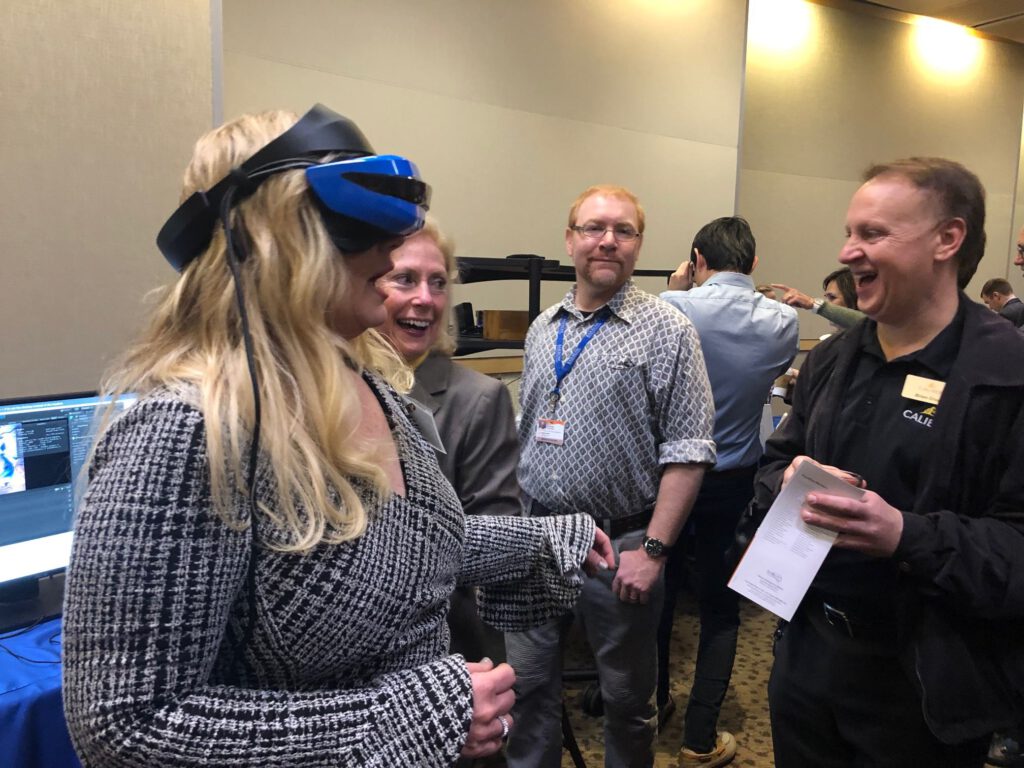

Ambassador event recap: Barrow Neurological Institute
Published: 01/25/2019
Updated: 02/13/2020
Did you know that more than 1.4 million people worldwide are fighting cancerous malignant brain tumors? In fact, by the end of this year, another 256,000 people will be diagnosed with brain tumors, according to the Ivy Brain Tumor Center in Phoenix.
As part of the Ambassador program, Greater Phoenix Economic Council (GPEC) held an event at Barrow Neurological Institute in Greater Phoenix to learn about local advancements in neurology. Ambassadors got an exclusive overview of the institute’s neurological center, which is consistently ranked as one of the best neurosurgical training centers in the United States.
So, what’s happening at the world’s largest neurological disease treatment and research institution? Dr. Michael Lawton, president and CEO of Barrow Neurological Institute, provided an impressive overview of the institute’s advancements and the vision for Barrow’s future.
Here are three takeaways:
- Patient Care
“Be the best and they will come.” Dr. Lawton kicked off his presentation with a motto from Dr. John Green, Barrow’s founder and first director in 1962. This phrase is similar to the institute’s mission statement, “build a center and they will come.”Fast-forward to present day, Dr. Lawton has transformed Barrow’s mission to “be the best, and lead them here.”With this new mission, Dr. Lawton’s vision is to focus on patient care by building a new campus infrastructure, attract talented clinicians, create a program development for epilepsy, and expand five new sites in the region.Dr. Michael Lawton, president and CEO of Barrow Neurological Institute, provides an overview of the institute’s advancements and the vision for Barrow’s future.
- Research and Innovation
There are 122 philanthropic grants supported by research and 865 patients enrolled in innovative clinical trials at Barrow. By practicing innovation through translational research, industry collaboration, and big data, the institution has developed the following:
- 3D printing devices: Barrow can now 3D print human skulls to better practice surgical exposure and build an operation into a series of steps.
- Surgical robot: Barrow neurosurgeons created a robot that can perform back surgeries. As the first of its kind, the robot is currently being used in hospitals nationwide.
- Deformed spine correction: The procedure is first practiced with a manmade model, and then the approved steps are implemented into real operating rooms.
GPEC Ambassadors explore Barrow’s innovation through virtual reality, robotics and more.
- Education
Barrow is educating the next generation of neurologists by offering various programs for high schoolers, undergraduates and international scholars, as well as through residencies, fellowships and symposiums. Additionally, the institution is bringing together engineers and neuroscience to further innovation.
- Arizona State University’s Ira A. Fulton Schools of Engineering and Barrow have collaborated to build an innovation center.
- Barrow’s artificial intelligence center has a new tool that can diagnose 14,000 chest X-rays within 38 seconds. This is an astonishingly short amount of time when compared to a radiologist diagnosing one chest X-ray, which would take a few hours.
- The observer program invites surgeons from all over the world to learn from Barrow’s neurologists.
Interested in building a more vibrant economic future for the region? Learn more.


